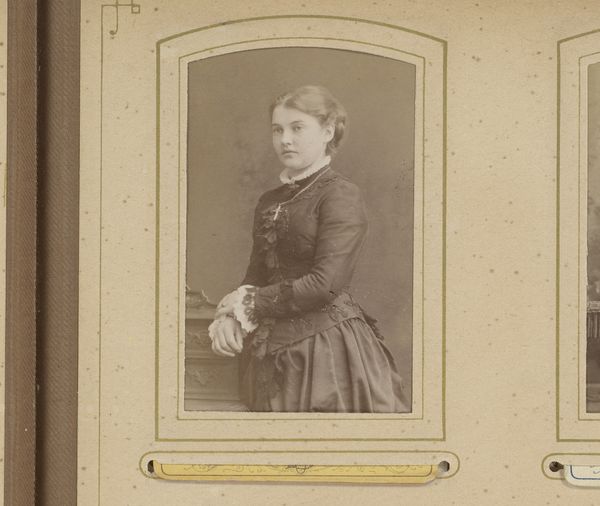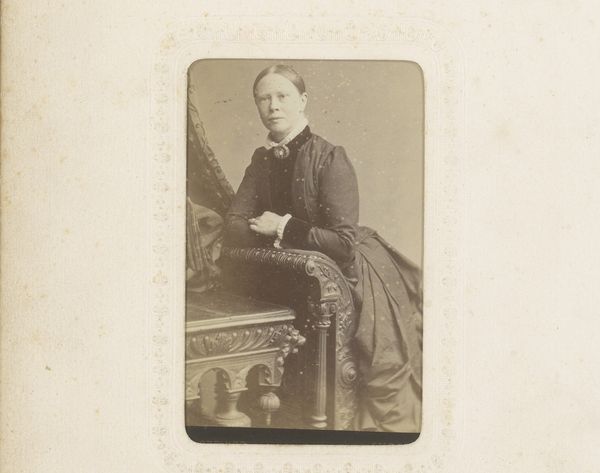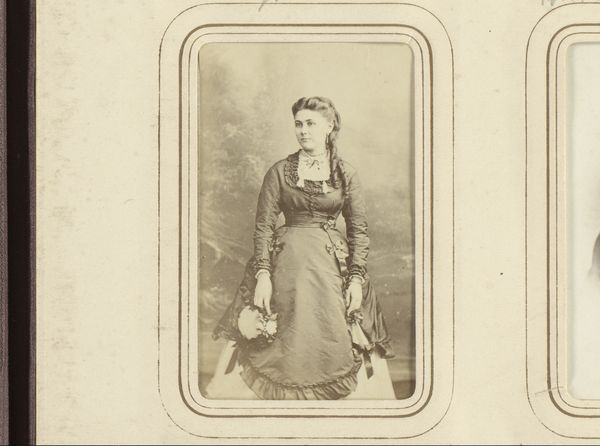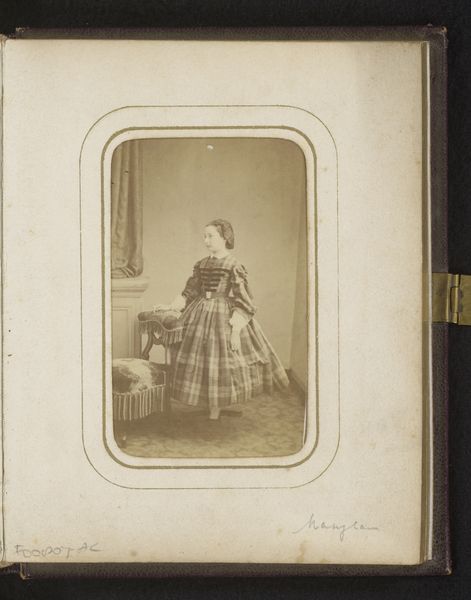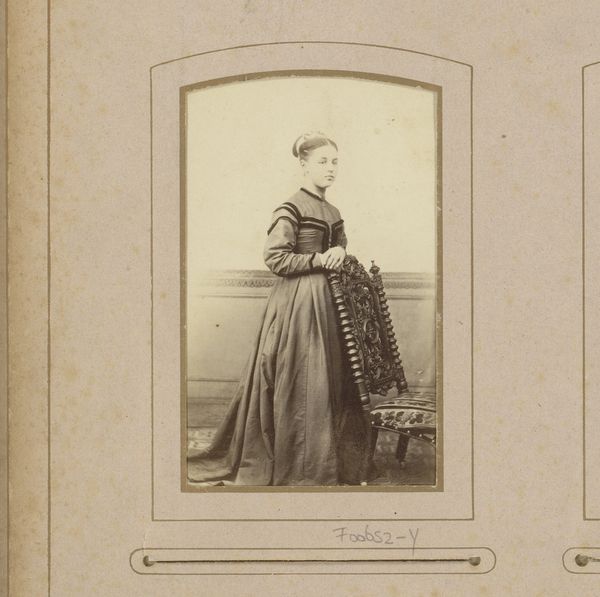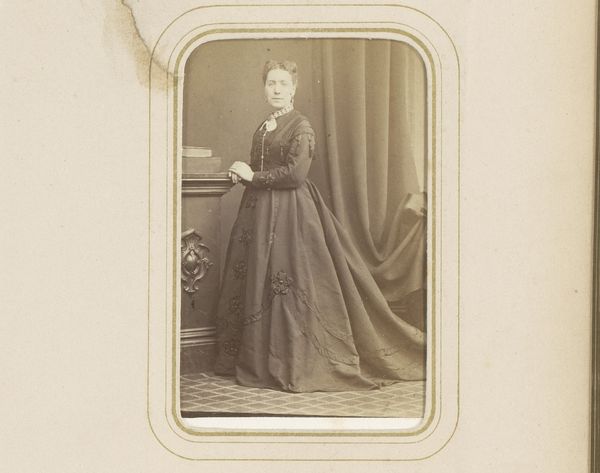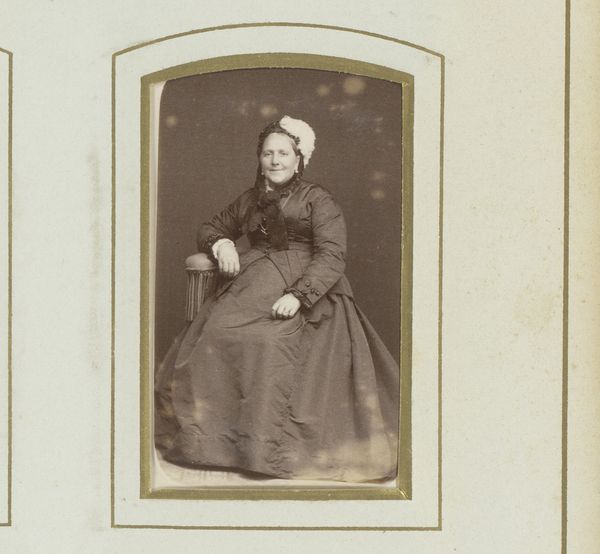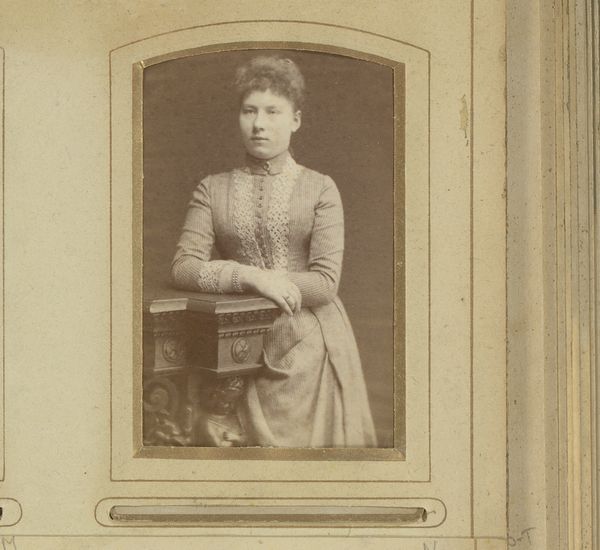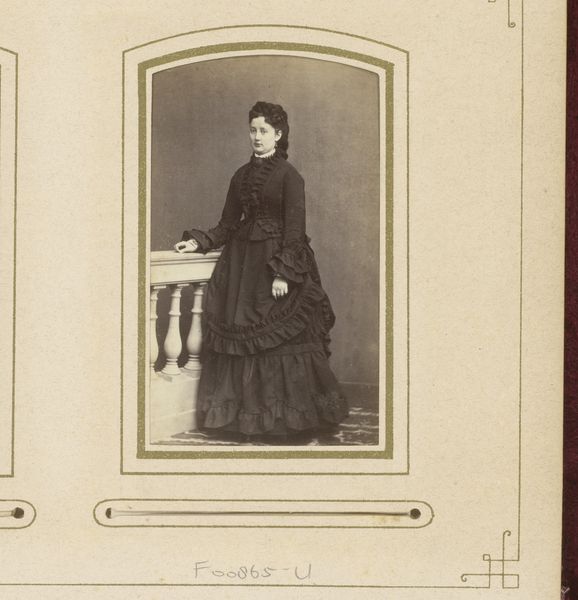
photography
#
portrait
#
photography
#
genre-painting
Dimensions: height 104 mm, width 63 mm
Copyright: Rijks Museum: Open Domain
Curator: I’m struck by the subdued melancholy in this photograph. It's a sepia-toned portrait of a woman standing next to a table. She appears almost frozen in a pose. Editor: This photograph, entitled "Portret van een vrouw" and taken sometime between 1875 and 1900, is interesting because the setting constructs a narrative. It certainly encapsulates the aesthetic and societal constraints placed upon women. The objects around her seem symbolic of intellectual aspiration and yet domestic confinement. Curator: Agreed, and look at the arrangement. The figure is carefully positioned in relation to the books and table. The verticality of the woman countered by the horizontality of the table—it's a study in form and balance, isn’t it? I find the almost monochromatic tone especially potent. It strips away distraction and forces one to focus on shape and texture. Editor: I see more than just a compositional exercise, though that's certainly present. The stern look she is giving the camera feels forced and not genuine. I see an echo of the performative roles women were expected to fulfill and display for public consumption. The ornate framing further box in and amplify that feeling, as does her formal dress. It’s not just visual; it’s sociopolitical. Curator: Do you see the details of her costume? Her corseted silhouette almost defines her form. We have an object acting to construct identity. Editor: Exactly. I notice how the use of photography itself became democratized in this period. These portraits speak to class aspirations, capturing the sitter attempting to negotiate what her position represents. She isn't merely being represented; she is strategically representing herself within the boundaries of what society permits. Curator: The interplay of light and shadow around her eyes tells us something too, doesn't it? We have light striking her face in a specific pattern. Her hand too on the table adds contrast and texture to the piece overall. It truly exemplifies photographic techniques in portraiture during that time. Editor: Perhaps by focusing so heavily on those elements, we avoid other questions. We can ask why she might be holding that specific pose or whether she even wanted her picture taken. Or about what choices this person would've had in her day. I like considering those questions alongside visual structure. Curator: I see how connecting art and social critique provides us access into larger questions of culture. Editor: Likewise, I admire your ability to tease out intrinsic structures and design principles, especially when analyzing visual dynamics, framing, and color elements in photographs.
Comments
No comments
Be the first to comment and join the conversation on the ultimate creative platform.
